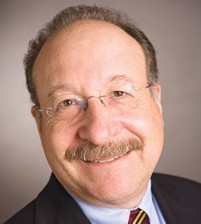Dubroff: X’s ad fallout highlights why agencies should embrace local media
Watching the stream of advertisers leaving X, formerly Twitter, grow from a stream into a torrent, I’m wondering if it’s time for the industry to make an about-face and embrace local media again.
Disney, Apple, IBM, United Airlines, Audi and Volkswagen are among the dozens of companies reportedly pausing or pulling their ads on X, many in response to owner Elon Musk’s retweet of an antisemitic slur.
Musk himself was in damage control mode on Nov. 27, traveling to Israel to visit with bigwigs and tour a kibbutz that was destroyed during the October 7 Hamas raid.
But the sudden change of attitude only reinforces the idea of Musk as an unpredictable steward for X, which he bought for $44 billion, far more than it is worth now.

The X audience has shrunk by some 12%, according to published reports.
But while X has struggled with its mercurial owner and a reputation for stoking social dysfunction and extremism online, look at what’s happened to local media.
Business-to-business publications like the Business Times have sharpened their digital focus, enhanced their email and sponsored content offerings, and made strides in measuring website traffic.
Local consumer publications have done much of the same and are now the go-to stops for online audiences who want community news.
Many organizations, including the Business Times, now offer a full suite of digital tools for local, regional and even national advertising.
We are learning how to fight back against the big three of Google, Amazon and Facebook, which still control the vast majority of digital ads.
By leaving X behind and pivoting back to local media, large advertisers can continue to use the big three for social media.
But they will also give local news organizations at a pivotal time for the advertising business.
First, it is becoming clearer to many advertisers that digital can generate page views and clicks but it doesn’t necessarily lead to sales.
Going local is more work for digital buyers, but it can reach people who are more than their social media profiles and it can be an alternative path to getting more revenue from diverse sources.
Second, there is a positive brand alignment to be gained when VW or Disney aligns its brand with the regional high school football champion or a spelling bee winner. Or a group of PCBT 40 under 40 honorees. That’s the sort of alignment advertisers dream about in terms of brand development.
Third, there is a social benefit to spending dollars with local media organizations. We have too many cities with “ghost newsrooms” where the daily newspaper is produced remotely with zero or perhaps just one live reporter in town.
A $500,000 to $1 million spend by a large group of advertisers in the top 100 national markets would be a game changer for many local publications, who would, in many cases, reinvest in their communities with more local reporting.
We’ve seen several of our regional and national banks make the point about investing in their communities in their advertising recently.
We’ve also had one advertiser explicitly state that they do not want their ads running on X.
Musk’s first response to the advertiser pullbacks in the wake of his antisemitic retweet was to sue Media Matters, a left-leaning website, over its reports about ads appearing next to antisemitic content.
X says Media Matters manipulated algorithms to produce the results; Media Matters says it did what users do every day in hitting the “refresh” button.
Musk “can be forgiven for having a touch of buyer’s remorse” over his $44 billion purchase, TheStreet.com wrote in June after Musk admitted that half his advertisers had left.
After the latest exodus, brands and their agencies should think about going back to the future and embracing local media.
Henry Dubroff is the founder, owner and editor of the Pacific Coast Business Times. He can be reached at [email protected].







